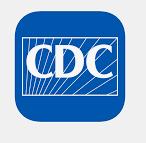
#These comments have been officially submitted to the Federal Register.
While the 2022 revised opioid prescribing guidelines represent a good start, I am concerned that remnants of the 2016 guidelines will undermine the real progress outlined in the rest of the new document, if not derail it entirely. The old expression “the weak link in a chain” applies here.
The two weakest links are:
1. CDC continues to “advise” physicians about prescribing opioids:
The revised guidelines say:
“This clinical practice guideline is not…A replacement for clinical judgment or individualized, person-centered care….”
Yet, the same document contains the following:
“Many patients do not experience benefit in pain or function from increasing opioid dosages to ≥50 MME/day but are exposed to progressive increases in risk as dosage increases. Therefore, before increasing total opioid dosage to ≥50 MME/day, clinicians should pause and carefully reassess evidence of individual benefits and risks.”
These two statements are incompatible – something that only those of us who have been actively involved in the pain patient crisis would suspect. While the new guidelines state that CDC advice is not intended to be “a replacement for clinical judgment,” it can be argued that this will be an unintended consequence of even mentioning dosing advice.
First, the CDC should not recommend what drugs should be prescribed or their dosage. As is the case with other medicines, this is a matter between the physician and the patient. If any agency needs to intercede, it should be the FDA, not the CDC.
More important, given how the 2016 guidelines were seamlessly incorporated into laws that set maximum daily doses of 90 MME, it is difficult to see how the 50 MME recommendation will not become standard practice, if not actual law. This is probably the biggest weakness in the revised guidelines as it still uses an arbitrary number that will likely be used to limit, not suggest, daily doses.
The inclusion of a dosing guide could very well derail the hard work of the committee because of the subsequent actions of lawmakers and the DEA.
2. MMEs (Morphine Milligram Equivalents) are still used.
The use of MME itself as a measurement of opioid “strength” is not justified by modern pharmacological science since it fails to consider even the most fundamental pharmacokinetic principles, e.g., absorption and metabolism. For example, both morphine and hydrocodone, according to the conversation table, are “equianalgesic” – they are the same strength. Left unstated is that morphine is typically administered intravenously while hydrocodone is a pill. The conversion table does not tell us whether hydrocodone is compared to oral or IV morphine; it simply implies that the two drugs are quite similar. They are not.
Regarding metabolism, some opioids e.g., hydrocodone, undergo oxidative demethylation, which is carried out by the CYP family of enzymes (Phase I metabolism). Others, e.g., morphine, undergo conjugation – the addition of a water-solubilizing group, (carried out by transferase enzymes) – followed by elimination Phase II metabolism). The rates and extent of metabolism can vary greatly depending on which type of metabolism acts upon the drug.
Of the six opiates (natural and semi-synthetic derivatives of opium) listed in the MME conversion table, three (oxycodone, hydrocodone, and codeine) undergo Phase I metabolism, and three (morphine, oxymorphone, hydromorphone) undergo Phase II metabolism. What might seem to be a trivial difference in structure between two drugs can profoundly affect the pharmacological properties of each drug to the point where direct comparison of the two is inherently flawed. This is especially true because of significant genetic differences in metabolism from one individual to another. The same dose of a given opioid may be ineffective in one individual and cause an overdose in another.
If the measurement of potency (MME) itself is based on invalid assumptions, then any table that uses MME values as a comparator is likewise invalidated, so any recommendation of dosage based on the MME conversion tables is automatically flawed.
Conclusion:
On the surface the revised guidelines would seemingly eliminate many of the problems created by the 2016 document. But it retains some of the same flawed science that led to these problems in the first place. This can only reinforce what many have been saying for years: the CDC lacks the expertise to formulate prescription drug policy. Even though the group that has proposed the revised guideline did an admirable job in correcting some of the wrongs created in 2016, it does not go far enough. The faulty science remains.



